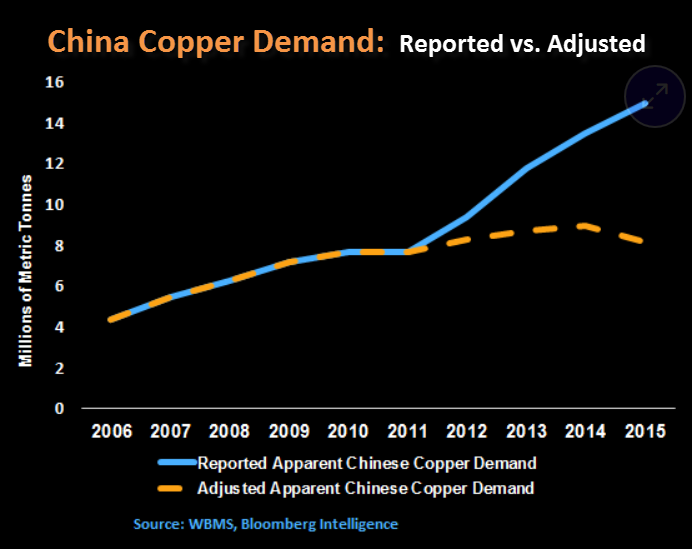It looks there may be trouble ahead for copper. This goes well beyond the falling copper price and annual surpluses.
According to the article, China’s True Demand For Copper Is Only Half as Much as You Think:
For years, traders on the mainland have used copper as collateral to finance trades in which they borrowed foreign currencies and invested the proceeds in higher-yielding assets denominated in renminbi. This carry trade with Chinese characteristics allowed them to net a tidy profit.
(As an aside, however, the devaluation of yuan in August prompted analysts to wonder whether this trade has reached its best-before date—something that would have implications for the future global demand for copper, if true. Meanwhile, there have been persistent rumors of regulators cracking down on such trades.)
This practice of warehousing copper to help engage in financial arbitrage “inflated demand, kept prices higher, and led miners to raise output,”according to Bloomberg Intelligence Analysts Kenneth Hoffman and Sean Gilmartin, who sought to identify the extent to which demand for copper has been buoyed by its use as collateral for such trades.
As the article states, Chinese investors have been buying copper to finance trades. Thus, they have been warehousing one heck of a lot of copper to finance these trades. This has kept demand artificially higher, causing mining companies to add more copper production.
How much more copper do these Bloomberg analysts believe is being acquired in China over and above forecasted industrial demand? Let’s look at the chart below:

As we can see in the chart, reported and apparent Chinese copper demand were the same until 2011. Then in 2011, we see a disconnect. Reported Chinese copper consumption continues to increase significantly (in Blue), while apparent copper consumption (Yellow dashed line) rises moderately then falls in 2015.
The article above continues with the following:













Leave A Comment